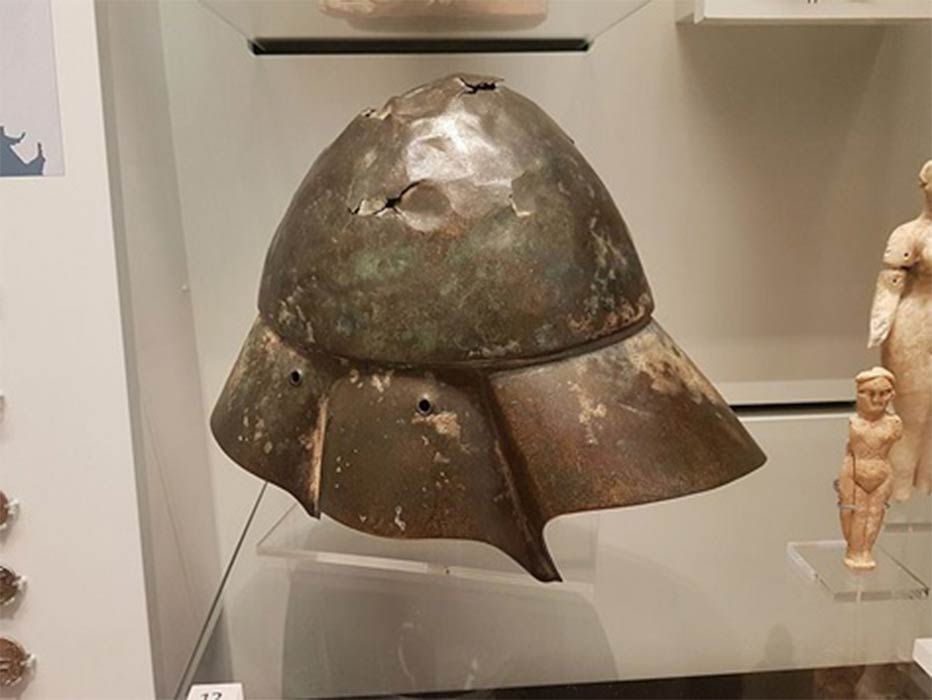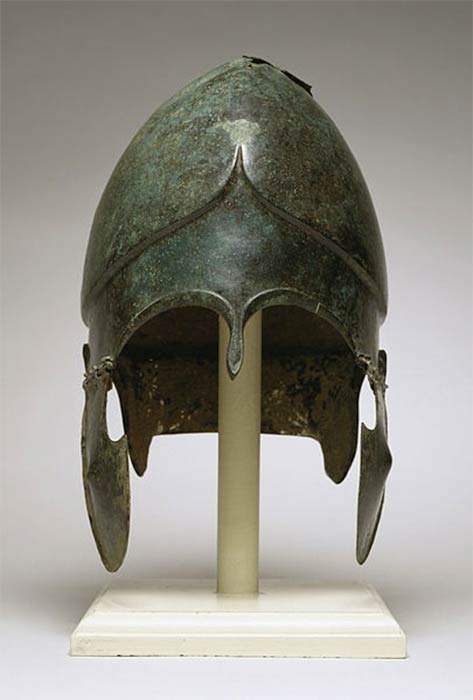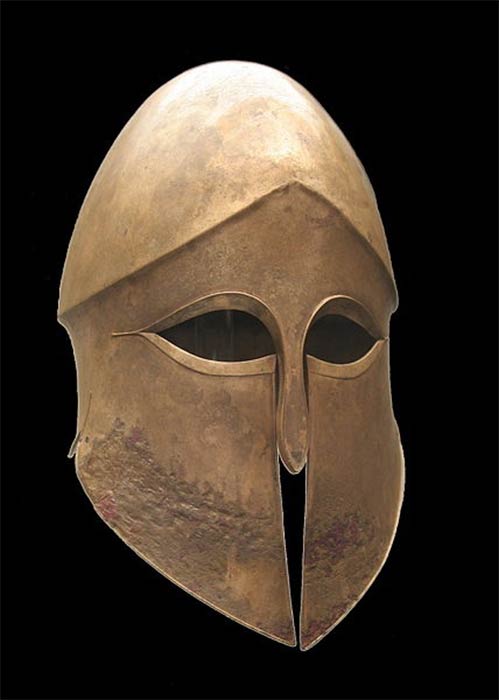
Battlefield Archaeology: Ancient Warrior Helmets and Head-Gear
Books, text, manuscripts and oral histories of most ancient cultures abound with heroes wielding an array of ancient weapons including endless famous swords, spears and supernaturally charged armor that were often gifted to the warriors by gods. However, while such weapons of war thrive in historical fictions they are no less prominent in the real world of battlefield archaeology. In this sub-discipline of archaeology, the tangible remains of battlefields are considered against the landscape of ancient blood-stained topographies that hosted training camps, skirmishes, sieges, and all out wars.
Close examination of these locations offers archaeologists insight to what tactics were deployed, what weapon modifications were adopted and which battle formations and strategies had occurred in any given feud, but within this discipline is a niche area of study that does not often get much publicity - the helmets and headgear of ancient combat.

The Boeotian bronze helmet discovered in the Tigris river in Iraq, was used in Ancient Greece during the Classical and Hellenistic periods, as well as in Ancient Rome. Ashmolean Museum in Oxford. (Gts-tg/ CC BY-SA 4.0)
In 1982 the Metropolitan Museum of Art held an exhibition called The Art of Chivalry and the associated book presented hundreds of pages of images showing enormous broad swords, highly-decorated stunning Gothic armor and ancient shields bearing the hack and slash marks from various ancient battles. What becomes apparent in this book is that while weapons changed greatly between different cultures, it seems almost every ancient warring or fighting culture, apart from the Celtic tribes, went to great lengths to protect their heads and faces as is evident in the wide array of helmets that archaeologists have recovered from battle sites all over the ancient world.

The bronze Chalcidian helmet a helmet was worn by ancient warriors of the Hellenic world, (fifth and fourth centuries BC). (Walters Art Museum/ CC BY-SA 3.0)
Hellenistic Helmets Of War
Originating in Ancient Greece and cast in bronze with three slits for the eyes and mouth, the Corinthian helmet was named after the city-state of Corinth and adaptations to the basic design led to helmet extending downwards at the back covering the entire head and nape of the neck. When not in active combat, Greek hoplites (citizen-soldiers) would tip the helmet upwards and this particular design inspired many variants in Italy where the eye and mouth slits were nearly closed. This classical Corinthian helmet was heavy and clumsy causing balancing problems when mounted cavalry received blows in the heat of battle. By the first century the Greeks eventually replaced this design with much lighter and more open helmets. Even lighter Italo-Corinthian headgear types were later developed.

This Roman Bronze Corinthian helmet dates to around 500 BC, Staatliche Antikensammlungen (CC BY-SA 3.0)




